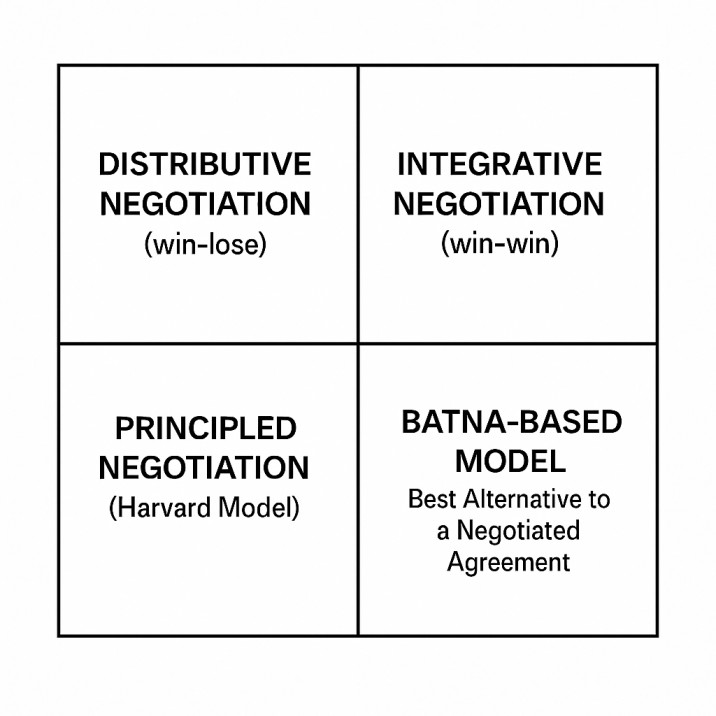
Negotiation models provide structured approaches to understanding and executing negotiations effectively. Here are seven major negotiation models, each with a distinct philosophy and application context:
1. Distributive Negotiation (Win-Lose Model)
Also known as positional or zero-sum bargaining, this model is used when parties are trying to divide a fixed resource.
- Focus: Claiming value
- Tactics: Anchoring, bluffing, making concessions
- Common in: One-time deals, salary negotiations, sales
2. Integrative Negotiation (Win-Win Model)
Also called interest-based or collaborative negotiation, this model seeks to create mutually beneficial outcomes.
- Focus: Creating value through understanding interests
- Tactics: Open sharing, brainstorming, joint problem-solving
- Common in: Partnerships, long-term business relationships
3. Principled Negotiation (Harvard Model)
Outlined in “Getting to Yes” by Fisher and Ury, this model emphasizes fair standards and mutual respect.
Four key principles:
- Separate the people from the problem
- Focus on interests, not positions
- Invent options for mutual gain
- Insist on using objective criteria
4. BATNA-Based Model (Best Alternative to a Negotiated Agreement)
This model revolves around understanding each party’s fallback plan.
- Emphasis: Strength of your BATNA determines your negotiation power
- Strategy: Improve your BATNA, weaken the opponent’s BATNA
- Common in: Business deals, diplomacy, vendor selection
